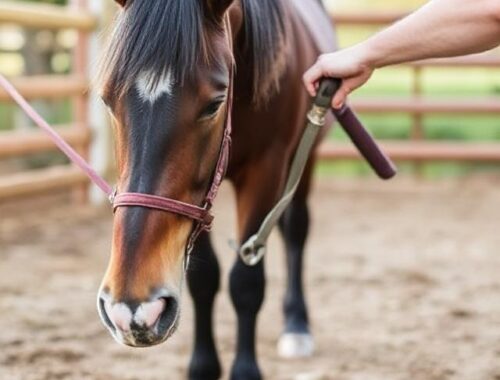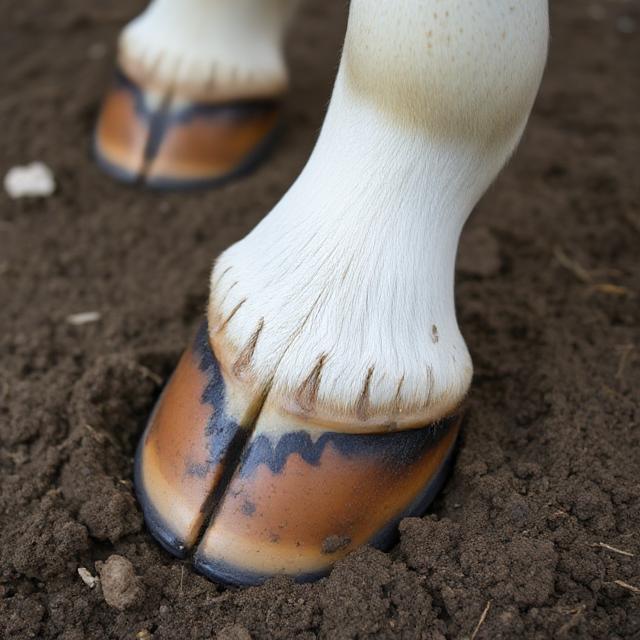
The Role of the Frog in Equine Hoof Health
If you’ve ever picked your horse’s feet, you’ve seen that soft triangle in the center—the frog of the hoof. It’s not just a filler part. This odd-looking patch cushions each step, adds traction, and supports circulation. It may seem minor, but it has a huge impact on how your horse feels and moves.
A strong frog keeps your horse sound. But if it gets overgrown, weak, or infected, the effects show up fast. Learning what it does and how to care for it helps you prevent a lot of issues before they start. Keeping this part healthy takes regular attention, but the payoff is worth it.

What Is the Frog of the Hoof?
This V-shaped, rubbery structure is located in the center of the hoof. It sits between the heels, bordered by the sole and the bars. It’s part of overall frog anatomy in horses, and while small, it plays a big role in hoof health.
This soft, springy pad absorbs pressure and connects to deeper tissues inside the hoof. It contains the central sulcus and two collateral grooves that can trap dirt and moisture. That’s why cleaning this area regularly is key to preventing infections. Healthy frog pressure and shock absorption also help protect internal hoof structures.
It’s made of thick tissue, flexible enough to handle compression, but strong enough to add support. A good one makes partial contact with the ground. That’s what allows it to do its job correctly. Understanding frog anatomy in horses helps you see why this part deserves more attention.
Main Functions of the Frog
The horse hoof frog has more than one role. All of them are important for movement and comfort.
Its biggest job is absorbing shock. As your horse walks or lands, this tissue softens the force that would otherwise hit the joints and bones directly. It works with the digital cushion to manage that pressure. Without this system, a horse’s legs take more of a beating.
Another role is traction. On mud, gravel, or uneven ground, the surface stretches and grips. That extra grip helps with balance and stability, especially in working horses.
Blood flow is another major function. With each step, the structure compresses, then springs back. That movement pumps blood up the leg, improving circulation. This is especially useful for horses standing in stalls for long periods.
Other frog function benefits include balance, proprioception, and pressure distribution. These features are all tied to frog pressure and shock absorption, which protects the rest of the leg from overuse and injury.
Key frog functions:
- Absorbs shock to protect joints.
- Boosts circulation through compression.
- Helps with traction on unstable surfaces.
- Distributes pressure across the hoof.
- Supports tendons and ligaments.
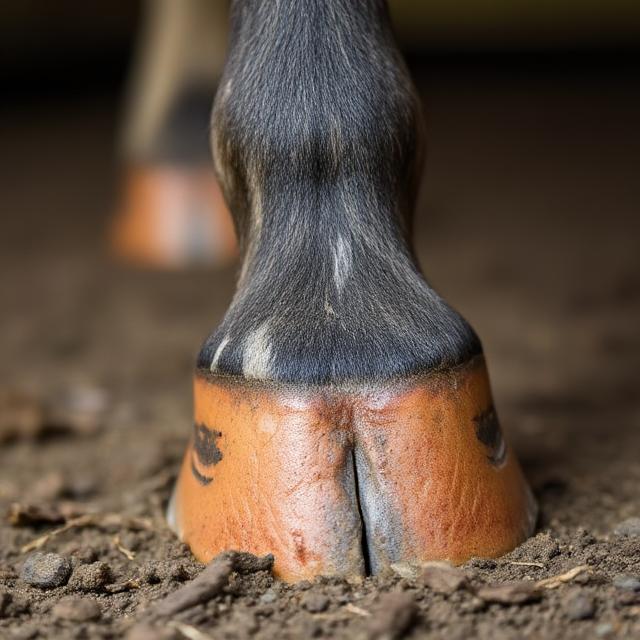
How the Frog Supports Movement
| Feature | Role in Movement |
|---|---|
| Shock Absorption | Reduces impact from ground forces |
| Ground Contact | Triggers blood flow, adds balance |
| Frog Pressure Distribution | Spreads weight across the sole evenly |
| Elasticity | Improves grip on variable terrain |
| Tendon and Ligament Support | Lessens load on soft tissue |
This part supports motion by acting like a spring. Each time the hoof lands, it compresses, spreading the weight and pushing blood upward. That bounce-back effect is a natural pump for circulation and a cushion for the joints.
Horses with well-trimmed frogs move with more comfort and security. But when the tissue is weak or recessed, they lose that support. Without contact, the structure can’t do its job, and the horse starts compensating with other areas. That creates new issues like heel pain or stress on tendons. Frog trimming helps prevent these complications.
Signs of a Healthy vs. Infected Frog
Knowing the difference between a strong one and a failing one is critical. A healthy one should feel firm but slightly springy. It should have a full, triangular shape with no deep cracks or odd textures. Understanding the difference between a healthy frog vs damaged frog can help you catch issues before they get worse.
When things go wrong, it often starts with bacteria. A frog infection usually begins in the grooves, especially if moisture is trapped. The most common issue is thrush in frog—a stinky, black, mushy mess that appears in the crevices. It causes pain and spreads fast if ignored.
Here’s how to tell the difference:
Healthy structure:
- Firm and springy like a pencil eraser.
- No foul smell or black buildup.
- Balanced, triangular shape.
Damaged tissue:
- Soft, peeling, or flaky texture.
- Strong odor and dark discharge.
- Recessed or losing shape.
Some shrink due to lack of contact. That’s called frog atrophy, and it means the hoof isn’t functioning as it should. Watch for signs early so you can step in quickly. The frog of the hoof can return to full function with care.

How to Maintain Frog Health
Healthy tissue comes from consistent care. One of the best ways to prevent problems is by cleaning the grooves daily. It only takes a minute but keeps bacteria from taking hold.
Use a hoof pick to remove debris from the sulcus and grooves. Don’t jab or scrape—just clear out packed mud or manure. If you smell something bad, it may be an early sign of thrush in frog. Treat the area with iodine or copper sulfate and keep it dry.
Trimming also matters. Overgrowth traps dirt and causes imbalance. Frog trimming helps restore contact with the ground and encourages proper pressure distribution. Your farrier should shape it gently, avoiding living tissue.
Good care includes:
- Daily cleaning with a hoof pick.
- Dry, clean living spaces.
- Regular farrier visits.
- Quick treatment at the first sign of infection.
Small routines make a big difference. Horses with healthy frogs walk better, feel better, and stay sound longer.
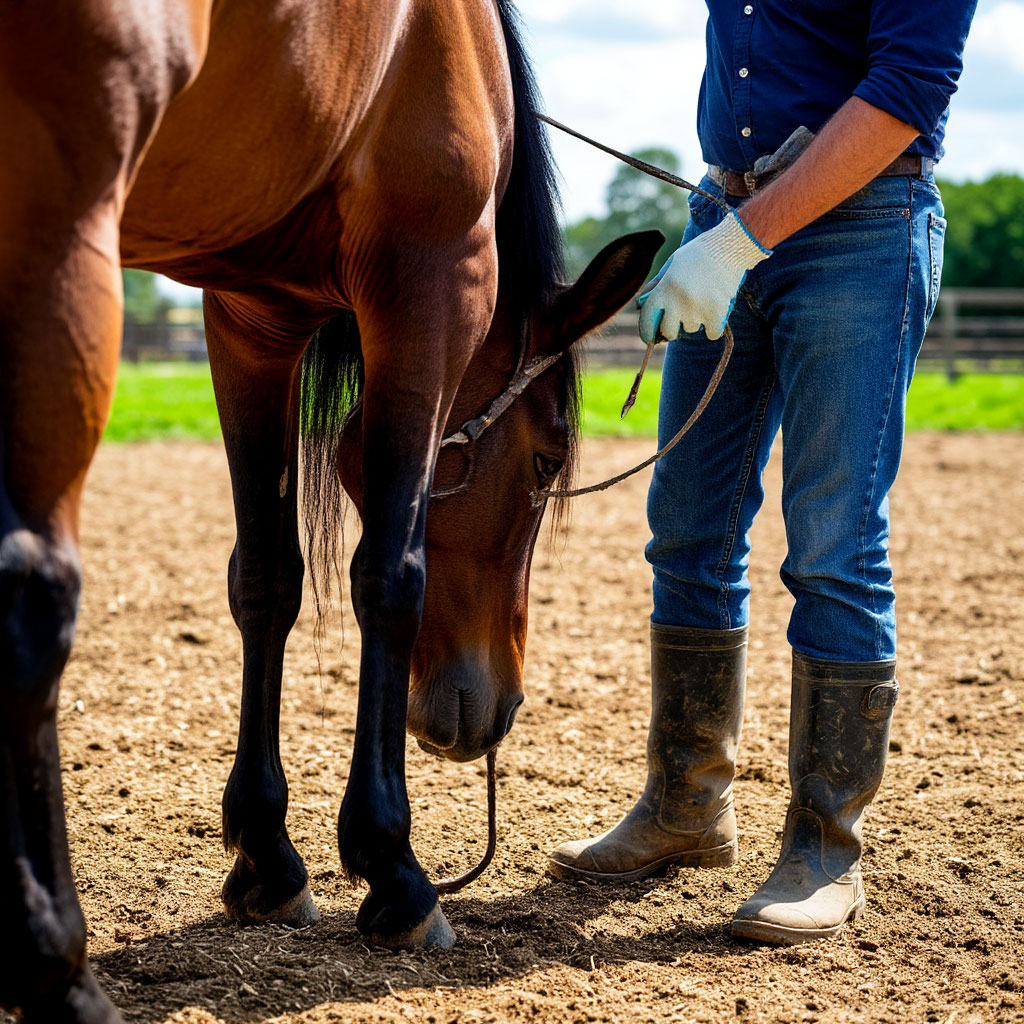
Frog-Related Conditions in Horses
Several common conditions affect the frog of the hoof. Most of them stem from moisture, poor hygiene, or lack of movement.
Thrush is the most widespread. It begins in damp areas and thrives in dirty hooves. This bacterial issue breaks down frog tissue and produces a dark, sticky discharge. If left untreated, it spreads deep into the foot.
A deeper frog infection may follow thrush or appear on its own. These cases can cause lameness and sometimes need vet care.
Frog atrophy happens when this area stops contacting the ground. This weakens its structure and function. Without pressure, it shrinks and circulation drops. Horses kept on soft surfaces are most at risk.
Some horses develop overgrowth. This occurs when soft footing prevents normal wear. Trimming corrects the shape, but if ignored, it causes imbalance and traps debris.
In extreme cases, frog pressure and shock absorption are reduced so much that it leads to pain in tendons, joints, and even behavioral changes under saddle.
The frog of the hoof plays a central role in all of these conditions. Keeping it healthy protects overall movement and structure.
Best Practices for Cleaning and Trimming the Frog
Taking care of the frog of the hoof is simple but powerful. Cleaning the frog every day helps you catch problems early and prevents infection.
Always use a clean hoof pick. Get into the grooves gently and remove anything stuck. If the area smells bad or feels soft, clean it again and disinfect. Keep your horse’s environment dry to limit bacteria growth.
Let a farrier handle frog trimming. They’ll shape the frog to maintain ground contact and remove only dead material. Cutting too deep can injure live tissue and delay healing.
If you see any of the following, contact your farrier:
- Deep cracks in the frog.
- Sharp odor even after cleaning.
- Frog separating from the sole.
- Persistent soreness or lameness.
These may signal bigger problems that basic care won’t fix. Frog of the hoof care shouldn’t be rushed. It deserves the same attention as the rest of the hoof.
The frog of the hoof may not get much attention, but it’s one of the most important parts of a horse’s foot. It softens impact, supports circulation, and helps your horse grip the ground.
Without daily care, this small structure becomes a major problem. Thrush, overgrowth, or shrinkage can all affect how your horse moves and feels. But with regular frog trimming, smart hygiene, and awareness of warning signs, you can avoid most issues.
Cleaning the frog is easy to overlook, but doing it well prevents most of the conditions horses deal with. Make the frog of the hoof part of your daily check, and your horse will thank you.
Keep this structure healthy, and the whole hoof benefits. That’s how you protect your horse’s comfort for the long haul.
You May Also Like
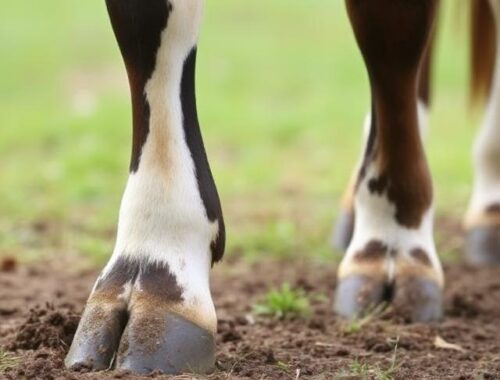
Daily Hoof Care Routine for Farm Animals: Tips Every Owner Should Know
June 26, 2025
Thrush in Horses: How to Identify, Treat, and Prevent This Hoof Infection
June 26, 2025